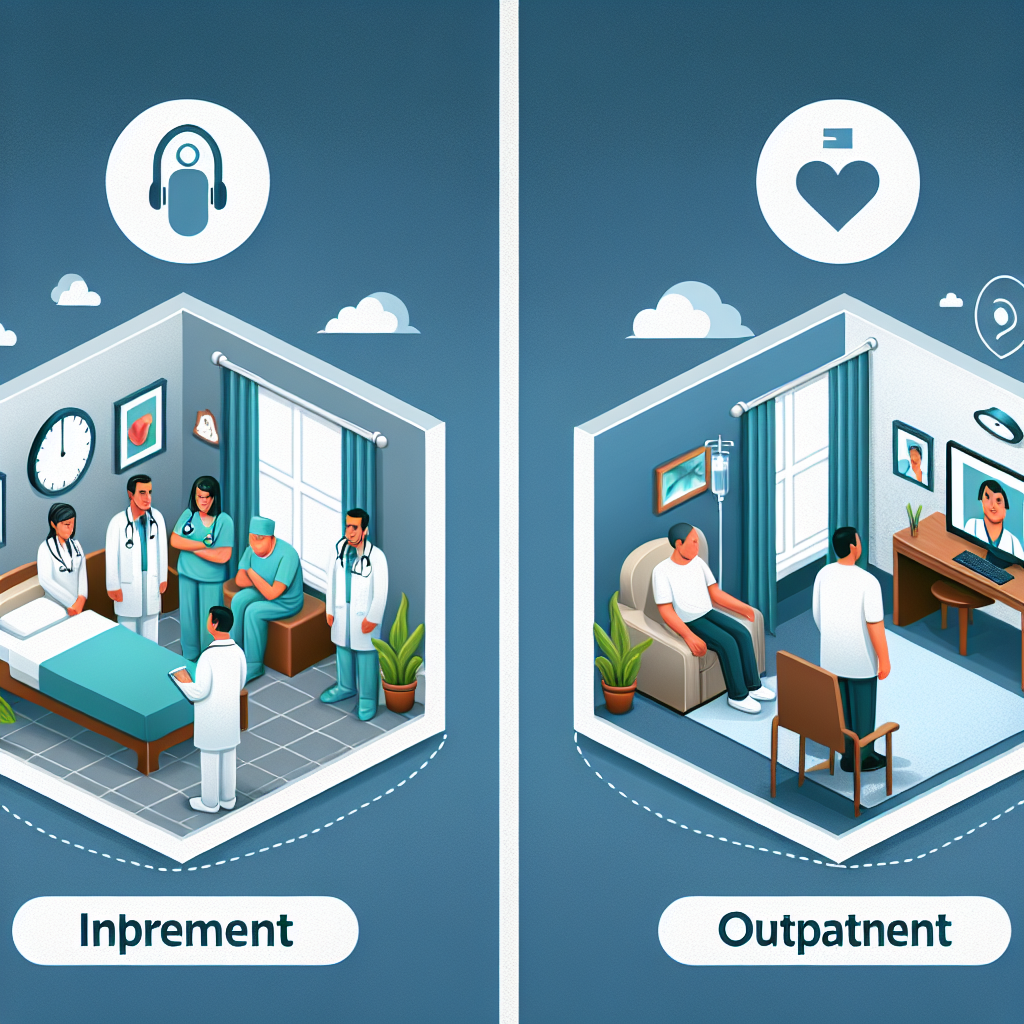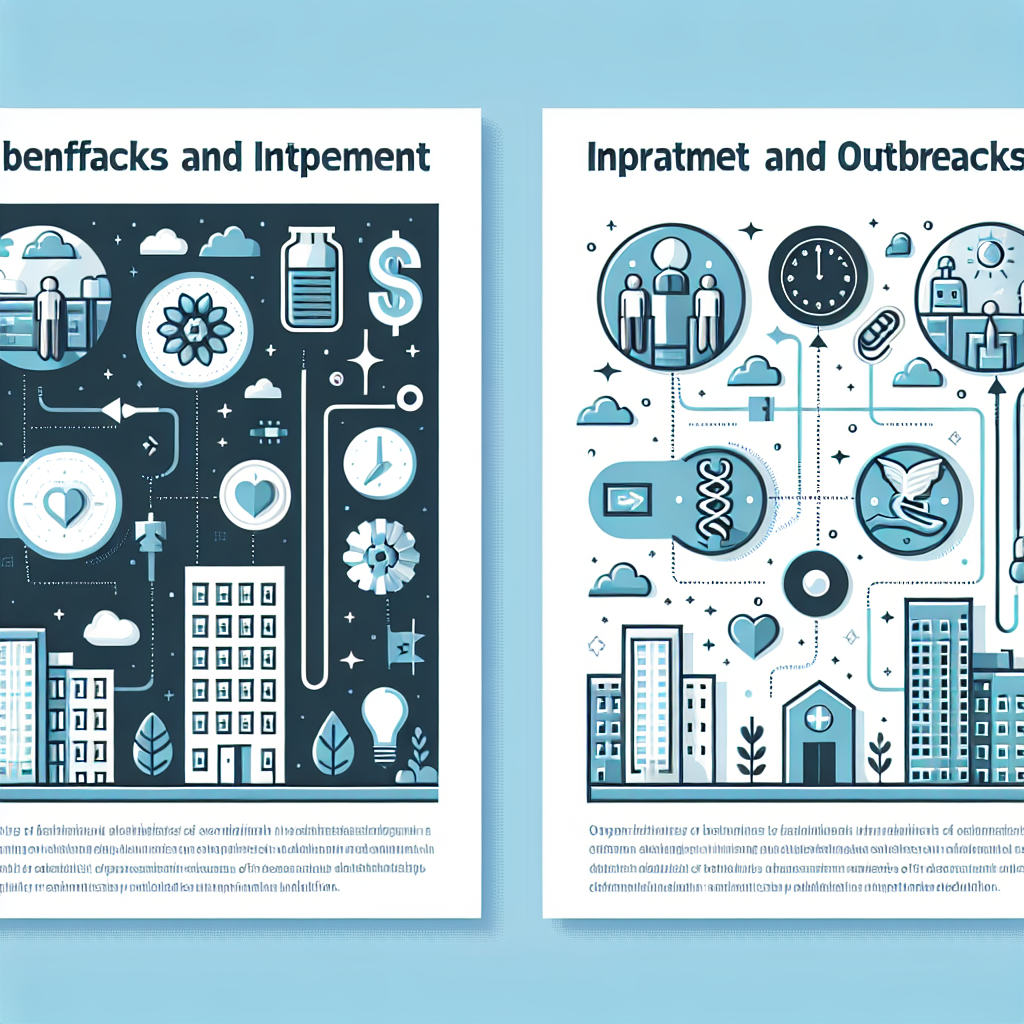-
Table of Contents

“Inpatient Treatment: The Intensive Path to Overcoming Severe Addiction.”
Introduction
When addressing severe addiction, the choice between inpatient and outpatient treatment is critical and can significantly impact recovery outcomes. Inpatient treatment, also known as residential treatment, involves the patient staying at a facility full-time, providing a structured environment with constant medical and psychological support. This setting is beneficial for individuals with severe addiction as it removes them from environments that may trigger substance use and offers intensive, round-the-clock care. On the other hand, outpatient treatment allows patients to live at home while attending scheduled therapy sessions and medical appointments. This option offers greater flexibility and is often less disruptive to daily life, making it suitable for those with strong support systems and less severe addiction. Ultimately, the decision between inpatient and outpatient treatment should be based on the severity of the addiction, the individual’s personal circumstances, and the level of support they require to achieve and maintain sobriety.
Inpatient Vs. Outpatient Treatment: Which Is More Effective for Severe Addiction?
When grappling with severe addiction, the choice between inpatient and outpatient treatment can be a pivotal decision on the road to recovery. Both treatment modalities offer unique advantages and cater to different needs, making it essential to understand their distinct features to determine which might be more effective for severe addiction.
Inpatient treatment, often referred to as residential treatment, involves a structured environment where individuals live at the treatment facility for a specified period. This immersive approach provides a sanctuary away from the triggers and stressors of daily life, allowing individuals to focus entirely on their recovery. The round-the-clock care and supervision ensure that medical and psychological support is always available, which can be crucial for those experiencing severe withdrawal symptoms or co-occurring mental health disorders. The comprehensive nature of inpatient treatment often includes a combination of individual therapy, group therapy, medical care, and holistic activities such as yoga or art therapy, all designed to address the multifaceted nature of addiction.
On the other hand, outpatient treatment offers a more flexible approach, allowing individuals to live at home while attending scheduled treatment sessions. This modality can be particularly beneficial for those who have responsibilities such as work, school, or family care that they cannot abandon. Outpatient programs vary in intensity, with some requiring daily attendance and others meeting a few times a week. This flexibility can make it easier for individuals to integrate recovery into their daily lives, potentially fostering a smoother transition to long-term sobriety. Moreover, outpatient treatment can be less costly than inpatient care, making it a more accessible option for many.
However, when considering severe addiction, the structured environment of inpatient treatment often proves to be more effective. The constant supervision and support can prevent relapse during the critical early stages of recovery. The immersive nature of inpatient care allows individuals to build a strong foundation before gradually reintroducing themselves to the outside world. This can be particularly important for those whose home environments are not conducive to recovery, as the absence of external triggers can significantly reduce the risk of relapse.
Nevertheless, outpatient treatment should not be dismissed outright. For some, the ability to maintain a semblance of normalcy while receiving treatment can be empowering. It allows individuals to apply coping strategies in real-time and receive immediate feedback from their support network. Additionally, outpatient programs often emphasize building a robust support system within the community, which can be invaluable for long-term recovery.
Ultimately, the decision between inpatient and outpatient treatment should be personalized, taking into account the severity of the addiction, the individual’s personal circumstances, and their support system. Consulting with healthcare professionals can provide valuable insights and help tailor a treatment plan that aligns with the individual’s needs and goals.
In conclusion, while both inpatient and outpatient treatments have their merits, inpatient treatment often offers a more controlled and supportive environment for those battling severe addiction. The intensive care and structured setting can provide the necessary tools and stability to embark on the journey to recovery. However, the flexibility and community integration offered by outpatient treatment can also play a crucial role in sustaining long-term sobriety. By carefully considering the unique aspects of each approach, individuals can make an informed decision that paves the way for a successful recovery journey.
Comparing Inpatient and Outpatient Programs: Finding the Best Fit for Severe Addiction Recovery
When it comes to severe addiction recovery, choosing between inpatient and outpatient treatment programs can be a pivotal decision. Both options offer unique benefits and challenges, and understanding these can help individuals and their loved ones make an informed choice. Inpatient treatment, often referred to as residential treatment, involves staying at a facility for an extended period, typically ranging from 28 days to several months. This immersive environment provides a structured routine, constant supervision, and a supportive community of peers and professionals. For those grappling with severe addiction, the round-the-clock care and removal from everyday triggers can be crucial in breaking the cycle of substance abuse.
On the other hand, outpatient treatment allows individuals to live at home while attending therapy sessions and participating in treatment activities. This flexibility can be particularly beneficial for those who have work, school, or family commitments that they cannot abandon. Outpatient programs vary in intensity, with some requiring daily attendance and others meeting a few times a week. This adaptability can make outpatient treatment a more accessible option for many, but it also demands a higher level of personal responsibility and self-discipline.
Transitioning from the general overview to the specific advantages of inpatient treatment, one of the most significant benefits is the comprehensive care provided. Inpatient facilities offer a range of services, including medical detoxification, individual and group therapy, and holistic treatments such as yoga and meditation. This all-encompassing approach addresses not only the physical aspects of addiction but also the psychological and emotional components. Moreover, the constant supervision ensures that any medical emergencies or withdrawal symptoms are promptly managed, providing a safer environment for recovery.
Conversely, outpatient treatment programs excel in offering continuity and integration into daily life. For individuals who have already completed an inpatient program or those with a strong support system at home, outpatient treatment can provide the necessary tools to maintain sobriety while navigating real-world challenges. The ability to apply coping strategies in real-time and receive immediate feedback from therapists can be incredibly empowering. Additionally, outpatient programs often emphasize building a robust support network, which can include family therapy sessions and community support groups.
However, the choice between inpatient and outpatient treatment is not always clear-cut. For some, the intensive nature of inpatient treatment may be essential to establish a solid foundation for recovery. The immersive environment can help individuals focus solely on their healing without the distractions and temptations of everyday life. For others, the flexibility and real-world application of outpatient treatment may better suit their needs, especially if they have already made significant progress in their recovery journey.
Ultimately, the decision should be based on a thorough assessment of the individual’s specific circumstances, including the severity of the addiction, the presence of co-occurring mental health disorders, and the level of support available at home. Consulting with healthcare professionals and addiction specialists can provide valuable insights and recommendations tailored to the individual’s needs.
In conclusion, both inpatient and outpatient treatment programs offer distinct advantages for severe addiction recovery. The key is to find the best fit that aligns with the individual’s unique situation and recovery goals. By carefully considering the benefits and challenges of each option, individuals can embark on a path to recovery that offers the greatest chance for long-term success and a healthier, more fulfilling life.
Q&A
1. **Question:** Which treatment setting is generally considered more effective for severe addiction, inpatient or outpatient?
**Answer:** Inpatient treatment is generally considered more effective for severe addiction due to the structured environment and 24/7 medical and psychological support.
2. **Question:** What is a key advantage of inpatient treatment over outpatient treatment for severe addiction?
**Answer:** A key advantage of inpatient treatment is the ability to provide a controlled environment that minimizes exposure to triggers and access to substances, which is crucial for individuals with severe addiction.
Conclusion
Inpatient treatment is generally considered better for severe addiction due to its structured environment, 24/7 medical and psychological support, and removal from external triggers and temptations.



